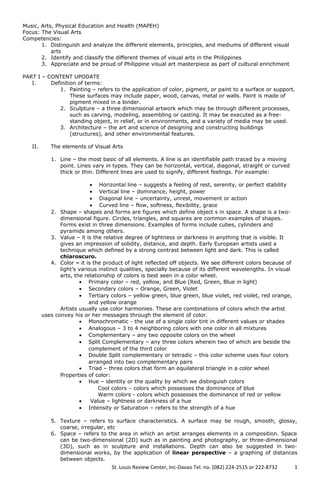This document provides an overview of key concepts in visual arts, including definitions of terms like painting, sculpture and architecture. It discusses elements of visual arts like line, shape, color, texture and space. It also covers principles of design such as balance, proportion, rhythm, emphasis and unity. Additionally, it examines painting styles and movements, notable Philippine painters and their works, sculpting processes and materials, architecture styles, and the history of Philippine architecture. The document is intended to help students understand and analyze different aspects of visual arts.









